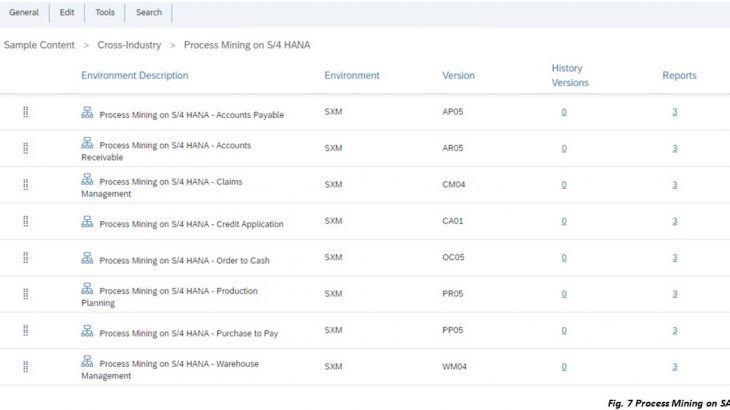Process Mining: a Trend in Big Data Analytics
Let’s see how we ended up with the need for process mining. Process mining brings the data science in action. Big Data was introduced due to intensive increase of global data. It describes large, in most cases unstructured datasets which need analysis in order to discover new values and understand better the hidden ones. Big Data also brings to our attention the question how can we benefit from it? In order to answer this question, we developed SAP Profitability and Performance Management. Calculation of massive volumes of data in seconds, improved decision making and integration of calculated results in process activities, planning cycles, visualizations and execution, are just small part of its capabilities.
SAP Profitability and Performance Management and Process Mining
SAP Profitability and Performance Management can help your organization to gain real-time actionable information and to align your processes with profitability and performance. Here is where the solution converges with process mining technique. Process mining measures business alignment. It points out the deviations in processes owned to discrepancies between real and expected behavior. This intersection with process mining immediately draw our attention and we created predefined contents for process mining with integration into SAP S/4HANA.

Process Mining Incentive: Why Should Companies Do It?
Growing digitalization put companies around the world in a competition wherein operational excellence is essential to survival. Our incentive to develop such a content was that process mining is a core element of achieving operational optimization and is essential for staying ahead of the competition. Its focus is to discover, monitor and improve real processes.
What is Process Mining?
Before answering this question, we need to know what process itself means. The recurrence of sequential order of different set of events by their timestamp builds up a given process instance or case. Each event corresponds to an activity executed in the process. Processes have defined start and end activities and are performed with the aim to achieve a certain goal (see Fig. 3). One process normally has many variants or specific sequence of activities (see Fig. 4). Process mining techniques obtain knowledge and retrieve actionable insights from processes by the means of real-time event logs extracted from company’s information systems and allow us to perform more specific types of analysis. Each event log collection represents an activity (action on a case) which has a unique activity ID. A case represents an instance of a given process, in the example below handling of one credit application is one case, which is studied by an activity. Event timestamps tell us when a given activity took place, and when is available provide us with more details about an activity. Usually, a process related data is scattered in various data sources. Data collection allow us to review in depth the history of a process. In our example below a case is related to one credit application. Each case runs through a certain process variant. Please see the overall picture of event data for process mining on Fig. 5.
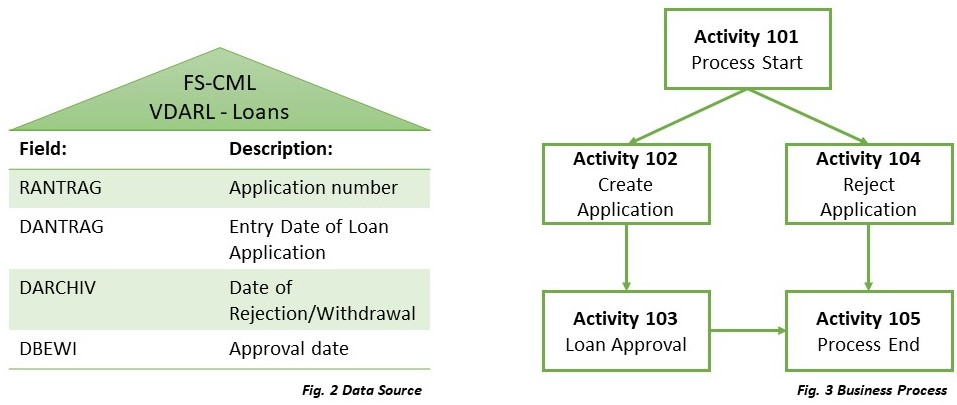
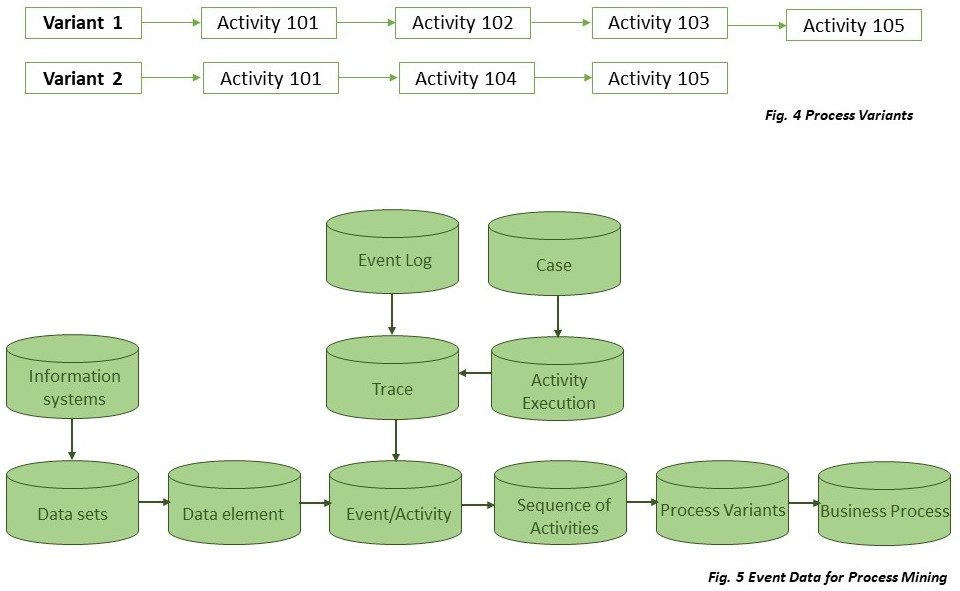
How Does It Work?
After the retrieval of this basic statistic information stored in event logs, which is starting point for process mining, it continues further with understanding of the organizational process. As you know, business processes are usually performed by various people who are involved just in a part of the overall process and are situated in different company departments. These circumstances make the understanding of the overall process a challenging task. Building main process flows in a process diagram gives us general knowledge of the process which each person involved in must have. The process diagram allows fast process discovery and easy detection of deviations to standard activity sequences(see Fig. 6). Process monitoring aids informed decision making, by telling us how we have performed against our expectations, as well as uncovering previously unknown process-related information.
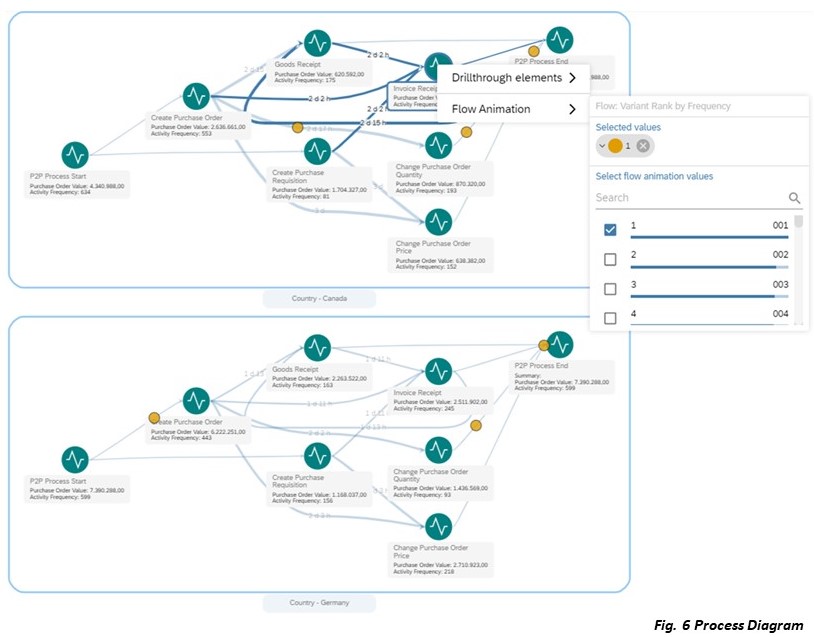
How Did We Use SAP Profitability and Performance Management to Leverage Process Mining?
Process mining can be applied in multiple business areas, including loans management, premium collection, customer service management or internal audit. SAP Profitability and Performance Management contains different process mining topics, please refer to Fig.7. The heart of our predefined contents is the integration into the SAP ERP and SAP S/4HANA system. From there, extensive detailed information is obtained automatically, converted into valuable knowledge about the different industry and cross-industry processes and then made available for analysis and what-if simulation of optimization scenarios.
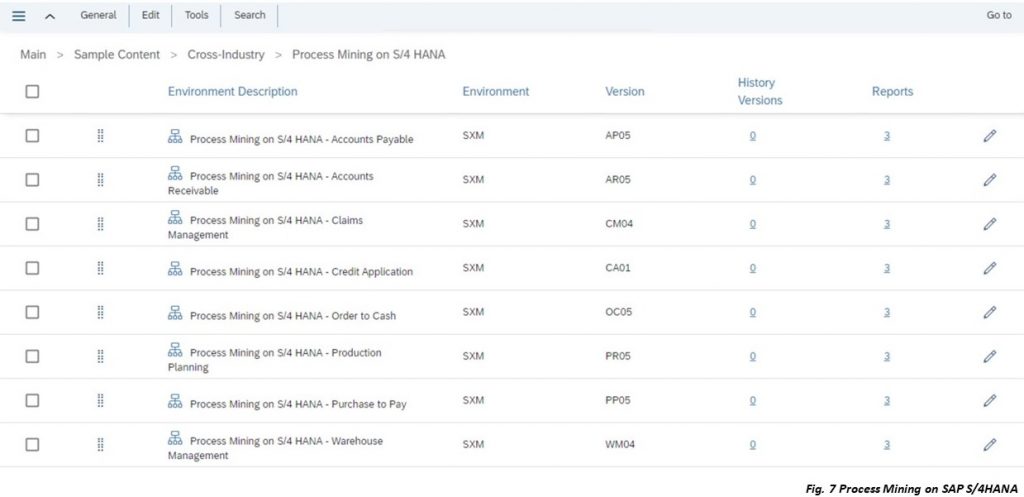
Event log forms the factual basis for the discovery and analysis of the processes. It records in individual events which information about which application was created, changed or deleted by which process and user. Depending on the event, internal and external business partner information, additional documents or even compliance violations can be looked up to better understand the context. Further, case specific information is used, for example invoices, contracts, policies, business partner data, loans data, claims data and so on. On this basis, the entire enrichment, calculation and determination of KPIs is carried out (see Fig. 8).
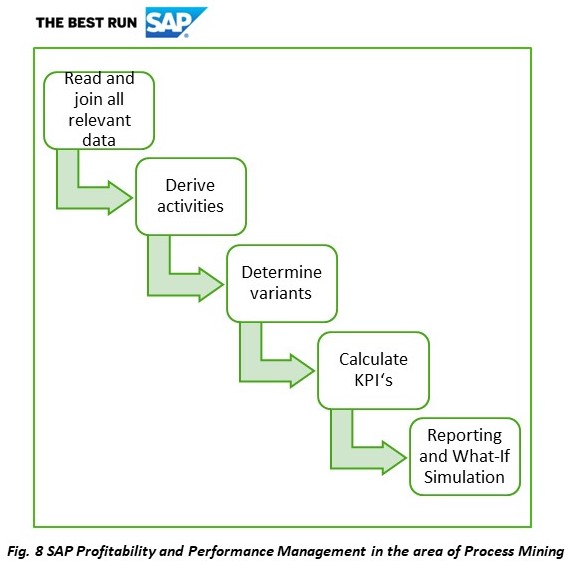
Afterwards, all information is available for analysis, for example to examine the most frequent or slowest occurring process variant, the automation rate, the compliance rate, or the happy path. You can read more about these standard and industry specific KPI reports in the approaching process mining blog posts. Report management offers capability to drill down through any dimension down to the individual case and activity level. With the help of the what-if simulation, the financial and temporal effects of possible process optimizations can be determined, for example by increasing the automation for certain activities or blocking undesired activities.
